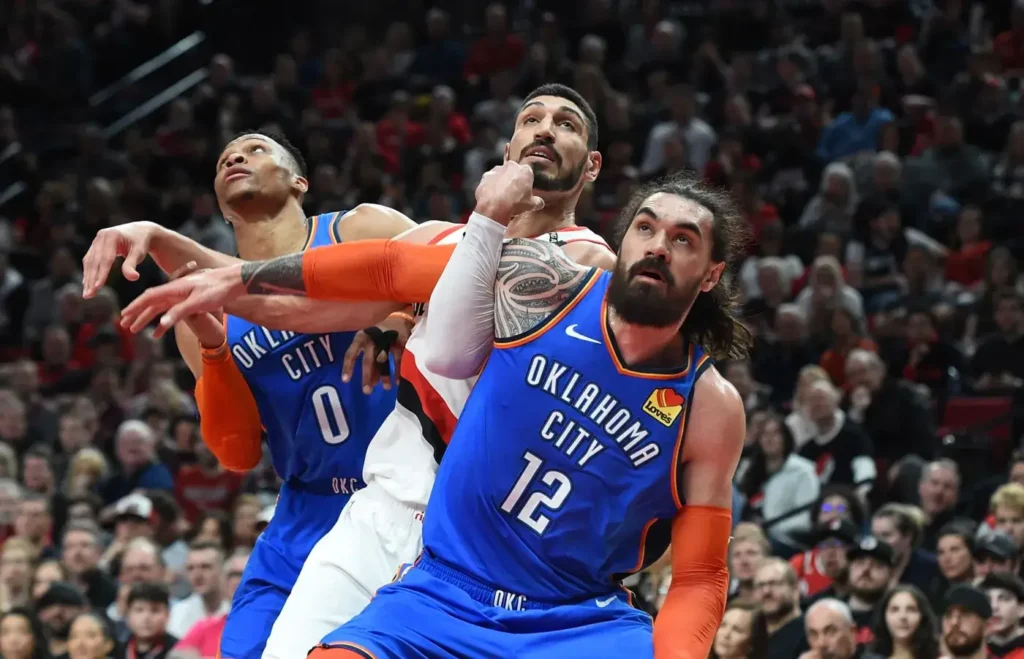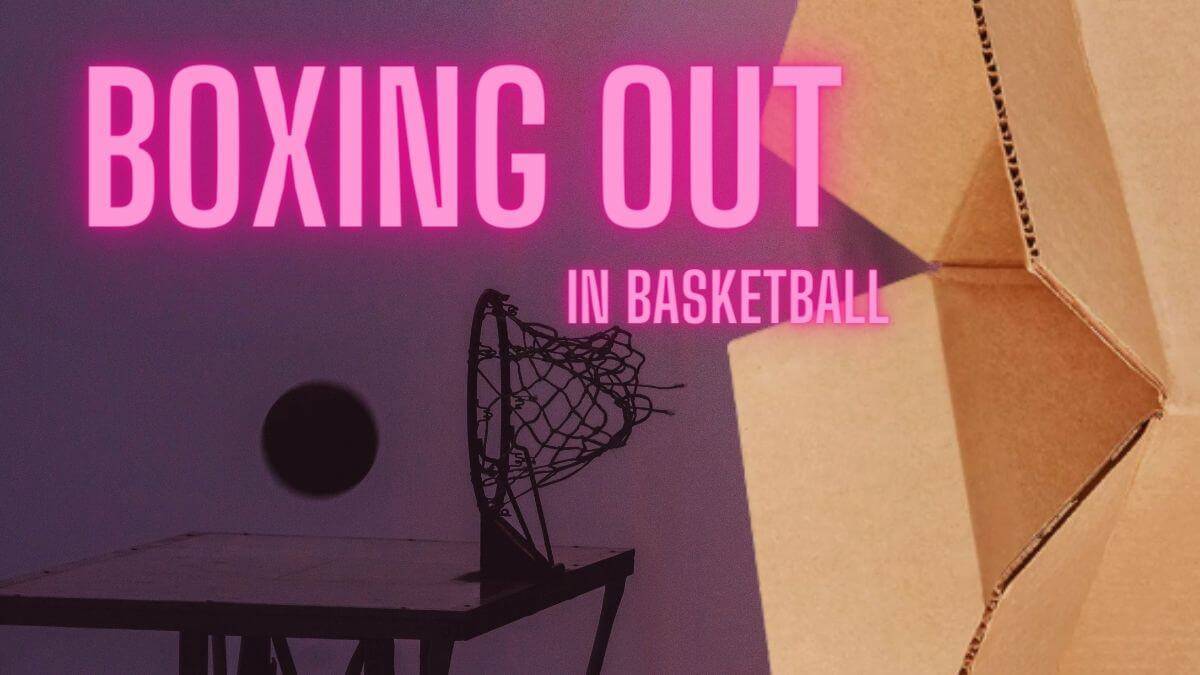In basketball, boxing out (or blocking out) is the subtle art of positioning oneself between your opponent and the ball in order to secure a rebound. It’s a crucial skill in basketball defense. If you can rebound effectively, you maximize your possessions. And boxing out correctly is key to effective rebounding.
Some focus on the basics of boxing out is one of the best things you can do for your team. Your guards probably don’t need to be in on this, considering. But a little work with your forwards and centers is going to open up space for your guards to up their rebound stats as well.
Here we’ll explore the importance of boxing out, its benefits, techniques, and some drills to improve your game. We’ll also take a look at how this skill has played into basketball history and some elite practitioners of this skill.
How to ‘Box Out’ Effectively
Create space and deny your opponent a chance at the rebound. Here are some key points to consider.
Proper Stance and Positioning
You need a powerful stance to box out effectively. Keep your feet shoulder-width apart, knees bent, weight on the balls of your feet. Make yourself an immovable object, anchored to the floor, a sturdy barrier between your opponent and the ball.
Timing
Synch up your movements to position yourself to snag that rebound as it comes off the rim. This takes some quick reflexes and a good sense of timing. Leaving your feet at the right moment will get you in range of the ball before your opponent.
Creating Space
Use your body to push your opponent out of the way. Of course, you have to be adept at avoiding the foul. Keep your elbows under control and use your lower body to gain leverage. Great defenders are known for their insane leg workouts. Put your opponent on like a backpack and head off to school.
Anticipation
One of the all-time defensive greats, Dennis Rodman was dead serious about understanding ball movement. He made it his business to know how each individual player’s shooting technique could influence the trajectory of a missed shot.
Two important notes regarding ball movement:
- The ball is always more likely to continue in the direction it is shot.
- A longer shot will have a tendency to deflect further.
Understanding these two simple points can give you a dramatic advantage over your competition. If the shot comes from the right side, you want to box out on the left side. If the shot comes from deep, you should box out deep. Know where the ball is going. Put yourself there.
Benefits of Boxing Out
Effective boxing out in basketball means more rebounds. More rebounds mean more possessions. More possessions for you means fewer possessions for your opponent. The benefits are obvious on the team level. Offensive rebounding gives your team a second chance to score. By boxing out, you create more space and increase your team’s chances of grabbing an offensive rebound.
On the opposite side, boxing out can limit second-chance opportunities. This can be awfully demoralizing. Controlling the boards will help you take control of the game and give your team the best shot at a win.
And if you’re an individual player trying to make your case on the team, perfecting your box out can certainly pad your rebounding statistics. It’s a great way to earn the trust of your coach. This is an effort-move with a serious pay off, so dig deep and go get those loose balls.
Free throws are another opportunity to showcase your box out. Grabbing a missed free throw is one more little edge to stay on top in a game that we all know can take a slide if you’re not vigilant.
Players Who Excel at Boxing Out
There are plenty of NBA players who have excelled at the box out over the years. With the depth of NBA play these days, you can point to just about any big as a player who is potentially an all-time great at separating the opposite team from an errant shot.
Some of the best in history might include Dennis Rodman, Tim Duncan, Dwight Howard. These players use a combination of technique and anticipation to control the boards and secure rebounds.
We don’t really have official stats on boxing out until the 2017-2018 season. But since that season we’ve had accurate advanced metrics on ‘boxing out’. Well, at least as accurate as can be for a somewhat subjective stat.
So in recent memory, Steven Adams is the best of the best. This dude is regularly referenced as the physically strongest guy in the league. He gets some rebounds, but more importantly he pretty obviously pads the rebound stats of everyone around him.

Boxing Out Drills
To improve your boxing out technique, you can incorporate the following drills into your practice routine:
- The Close-Out Drill: This drill simulates a game situation where you need to box out an opponent. Practice closing out on a player and securing the rebound.
- The Two-on-Two Rebounding Drill: This drill requires two offensive and two defensive players to practice rebounding in a small space. The offensive players try to score while the defensive players box out and secure the rebound.
- Push-Up Blitz: Split your team up into offense and defense and put up some shots. As soon as the ball leaves the shooters hand, every defensive player should locate the closest offensive player and box them out. If the offense gets the rebound, the defense does push-ups.
Incorporating these drills into your practice routine can help improve your boxing out skills and give you an advantage on the court.
Conclusion
Boxing out is an essential aspect of basketball that often goes unnoticed. By mastering the technique, you can improve your rebounding statistics, limit the opponent’s offensive effectiveness, and give your team a chance to win.
Use the techniques, benefits, and drills discussed in this post to take your game to the next level. Don’t forget to practice and incorporate these skills into your game plan for the best results.
